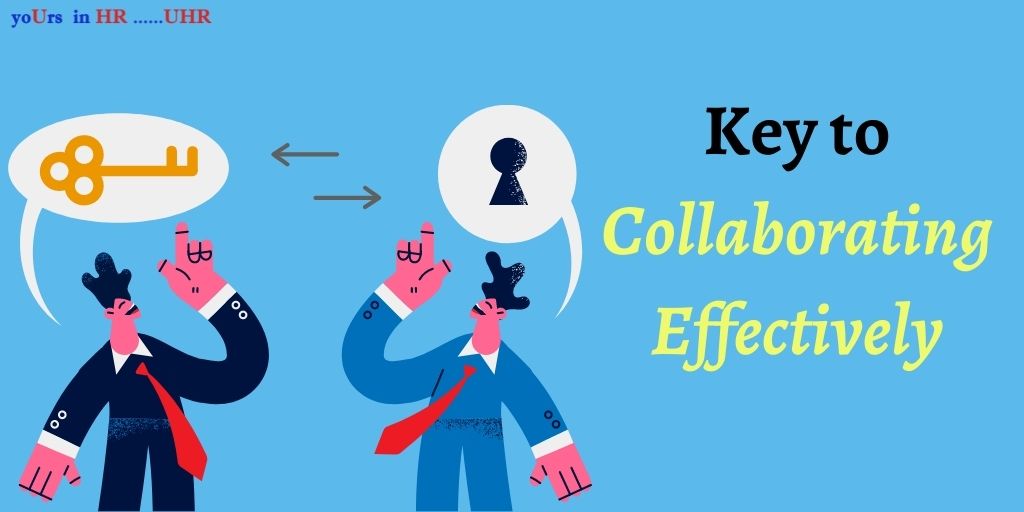
Collaboration at work in various degrees is always present. A company or organisation works because we have multiple people contributing their varying set of skills and competencies, experience levels and ideas, and thus collaborating in a subtle, unnoticed way. Within and between the organisations too, there are opportunities to consciously collaborate on projects, meetings and objectives.
Collaboration is everywhere, team-work is everywhere, and yet sometimes we end up feeling overwhelmed or unnecessarily called out. Departments might feel the workload is lopsided, that some departments have it easy. At the group level too, individuals might feel some of them are doing more work than the others. On the other hand, some might not even understand the need to collaborate in the first place.
The question then arises- how to collaborate effectively? Let us have a look around the question, and what pointers can be kept in mind.
Collaborate to Build Capacity:
Collaboration is about complementing the limitations of one side and using the strengths of the other to balance things out. Hence, it involves some form of helping, uplifting, which can be a huge motivation for people. Moreover, some people just go the extra mile because that is just how they function- they like to take on responsibilities head on.
On its downside, this motivation can also lead one to overwork and micromanage actions of others, leading to feeling like ‘I am doing all the work here’. At some point, a few people carrying the lopsided wagon are going to undergo some form of burnout.
To avoid such a situation, it’s a good idea to remember that collaboration is about building capacity of everyone. As an article by Harvard Business Review points out:
‘Helping is the quintessential constructive act, and it gives us a sense of purpose, fulfils a deep need to be useful, and bolsters our identity. But if you jump in too quickly or too often or in ways that solve others’ problems without building capability, you inevitably become the path of least resistance for too many requests.
….. Don’t solve peoples’ problems directly when you do jump in. Instead, connect them to the right people, point them to the information or resources they need, or coach them on how best to solve the problem. ‘
It is about showing the direction, perhaps delegating but ultimately walking together.
But then there is the opposite end of this spectrum.
Not Everyone Might be Very Enthusiastic to Collaborate:
There are individuals who are willing to take on collaborative projects, ready to interact with people across the world, literally and figuratively. And then there are the ones who might see the collaboration as an attack on their skills and competencies. The underlying feeling might be ‘Do they think we are not capable enough to do this on our own?’
This might especially be the problem with people who are experts or super-specialists. Seniors might feel attacked and juniors might feel underconfident about their abilities. Some others might just feel like the collaboration is ‘an imposition on their time’ and ‘extra workload’ as an article by Mindtools puts it. This is especially true for people who like to work more independently.
To avoid, this, it is important to first, to be clear about the purpose of collaboration and second, to let the collaborators know what’s in it for them.
As the articles goes on to point out, a strong, shared purpose can work wonders in this attitude. And letting people know how this collaboration would help them, for example, something as simple and straightforward as a bonus, more recognition, a chance to develop and learn new skill(s), career progression, can work as a great motivation for a good attitude towards the idea of collaboration.
The More the Merrier? Not Always:
A very basic and obvious sounding pointer to keep in mind: the key to collaborating effectively is not simply to involve a greater number of people but to involve the right people. An analogy of a team-sport like football can work here: when the team is not playing well, more players are not added. Instead, some players are substituted for new players who might be feeling less tired, or who might have the specific set of skills needed to win the particular game.
Moreover, the ‘substitution’ is not seen as a lack of skill of the player who is replaced- their skills might be used better in a different game. The ‘substitution’ is not simply a replacement per se– it is rather letting the one who has the relevant skills for that context take the lead. The substituted player still has a place in the team.
Similarly, when a task or a project doesn’t seem to be working out too well, the key might be to recheck the kind of skills and competencies that are needed for the task, and ‘substitute’ the team members accordingly.
At an organisational level, this ‘substitution’ can simply be seen as letting one department take the lead on the particular project, rather than replacing anyone or anything entirely. It’s a win-win situation. Again, taking on the lead doesn’t mean that there is no delegation or no walking together towards the common goal- the team remains intact.
It is widely being accepted that in the contemporary world of work, it is collaboration and not competition that is key to thriving, as we have talked about in one of our earlier articles. And to collaborate effectively, a shared sense of purpose, and a willingness ‘to learn and let others learn’ are some pointers to keep in mind.



